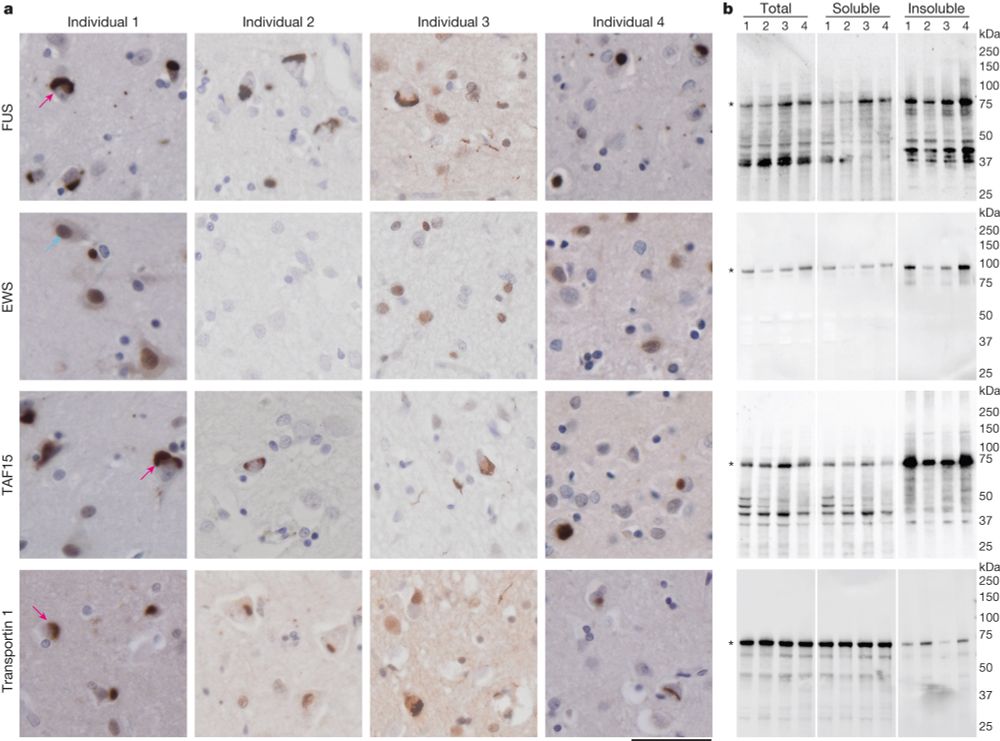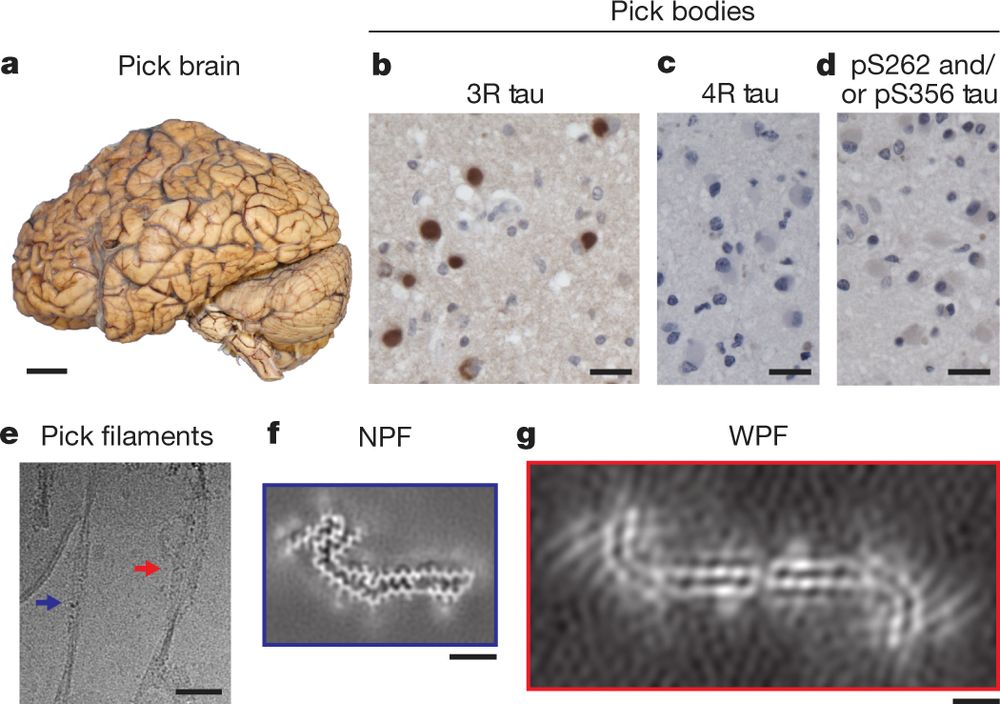
Emanuele Lamberti
@elamberti.bsky.social
neurology @unipd.bsky.social
Selective RNA sequestration in biomolecular condensates directs cell fate transitions rdcu.be/eNA8F

Selective RNA sequestration in biomolecular condensates directs cell fate transitions
Nature Biotechnology - Stem cell differentiation is controlled by manipulating RNA condensates.
rdcu.be
October 31, 2025 at 7:32 AM
Selective RNA sequestration in biomolecular condensates directs cell fate transitions rdcu.be/eNA8F
Effects of Charge Sequence Pattern and Lysine-to-Arginine Substitution on the Structural Stability of Bioinspired Polyampholytes pubs.acs.org/doi/10.1021/...

Effects of Charge Sequence Pattern and Lysine-to-Arginine Substitution on the Structural Stability of Bioinspired Polyampholytes
A comprehensive study focusing on the combined influence of the charge sequence pattern and the type of positively charged amino acids on the formation of secondary structures in sequence-specific polyampholytes is presented. The sequences of interest consisting exclusively of ionizable amino acids (lysine, K; arginine, R; and glutamic acid, E) are (EKEK)5, (EKKE)5, (ERER)5, (ERRE)5, and (EKER)5. The stability of the secondary structure was examined at three pH values in the presence of urea and NaCl. The results presented here underscore the combined prominent effects of the charge sequence pattern and the type of positively charged monomers on secondary structure formation. Additionally, (ERRE)5 readily aggregated across a wide range of pH. In contrast, sequences with the same charge pattern, (EKKE)5, as well as the sequences with the equivalent amino acid content, (ERER)5, exhibited no aggregate formation under equivalent pH and concentration conditions.
pubs.acs.org
September 13, 2025 at 8:53 AM
Effects of Charge Sequence Pattern and Lysine-to-Arginine Substitution on the Structural Stability of Bioinspired Polyampholytes pubs.acs.org/doi/10.1021/...
Clustering within a single-component biomolecular condensate www.biorxiv.org/content/10.1...

September 9, 2025 at 10:49 AM
Clustering within a single-component biomolecular condensate www.biorxiv.org/content/10.1...
Charged peptides enriched in aromatic residues decelerate condensate ageing driven by cross-β-sheet formation rdcu.be/eEWB9

September 8, 2025 at 7:03 PM
Charged peptides enriched in aromatic residues decelerate condensate ageing driven by cross-β-sheet formation rdcu.be/eEWB9
Non-native entanglement protein misfolding observed in all-atom simulations and supported by experimental structural ensembles www.science.org/doi/full/10....

Non-native entanglement protein misfolding observed in all-atom simulations and supported by experimental structural ensembles
All-atom simulations populate a predicted class of misfolding, and ensembles are proposed based on structural mass spectrometry.
www.science.org
August 13, 2025 at 7:09 PM
Non-native entanglement protein misfolding observed in all-atom simulations and supported by experimental structural ensembles www.science.org/doi/full/10....
Amyloid-β modulates the phase separation and aggregation of α-synuclein www.pnas.org/doi/10.1073/...
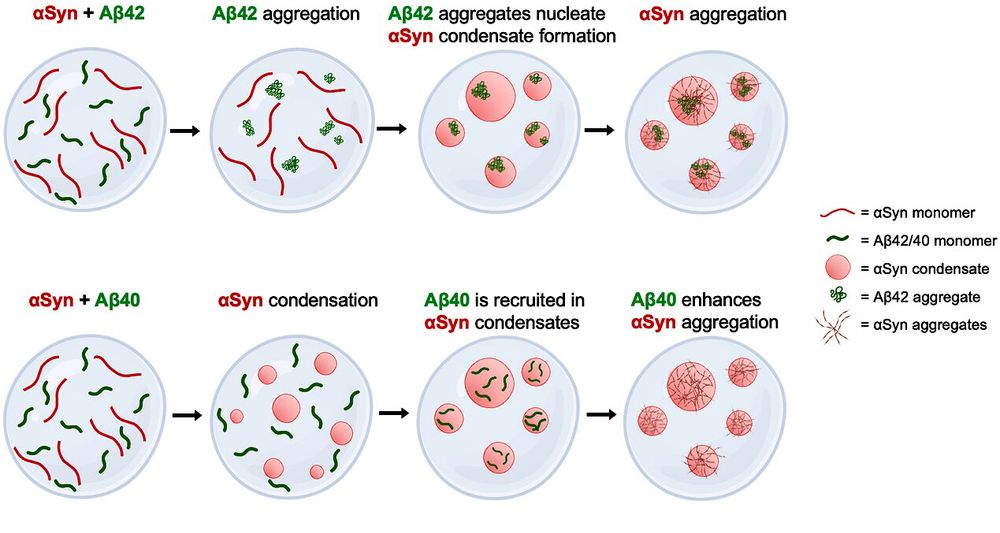
August 3, 2025 at 12:08 PM
Amyloid-β modulates the phase separation and aggregation of α-synuclein www.pnas.org/doi/10.1073/...
M6A-dependent RNA condensation underlies FUS autoregulation and can be harnessed for ALS therapy development www.science.org/doi/10.1126/...
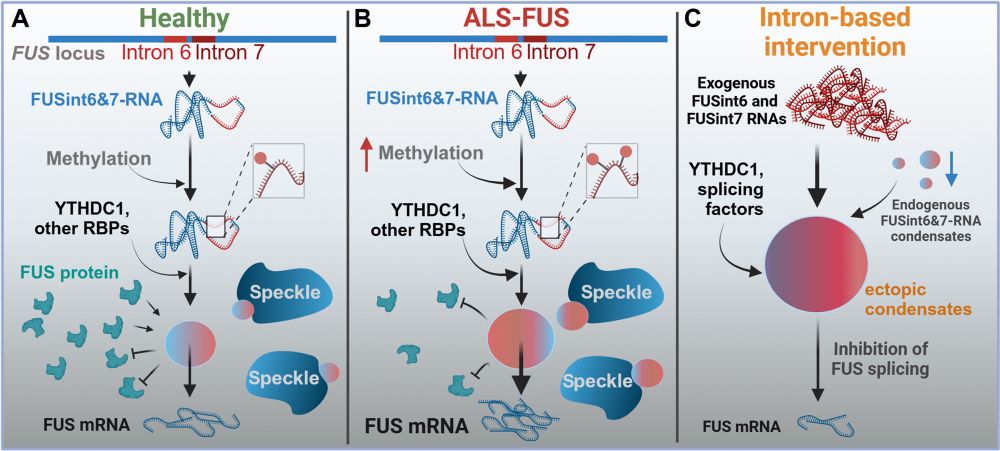
July 26, 2025 at 10:18 AM
M6A-dependent RNA condensation underlies FUS autoregulation and can be harnessed for ALS therapy development www.science.org/doi/10.1126/...
Direct binding of TDP-43 and Tau drives their co-condensation, but suppresses Tau fibril formation and seeding www.biorxiv.org/content/10.1...
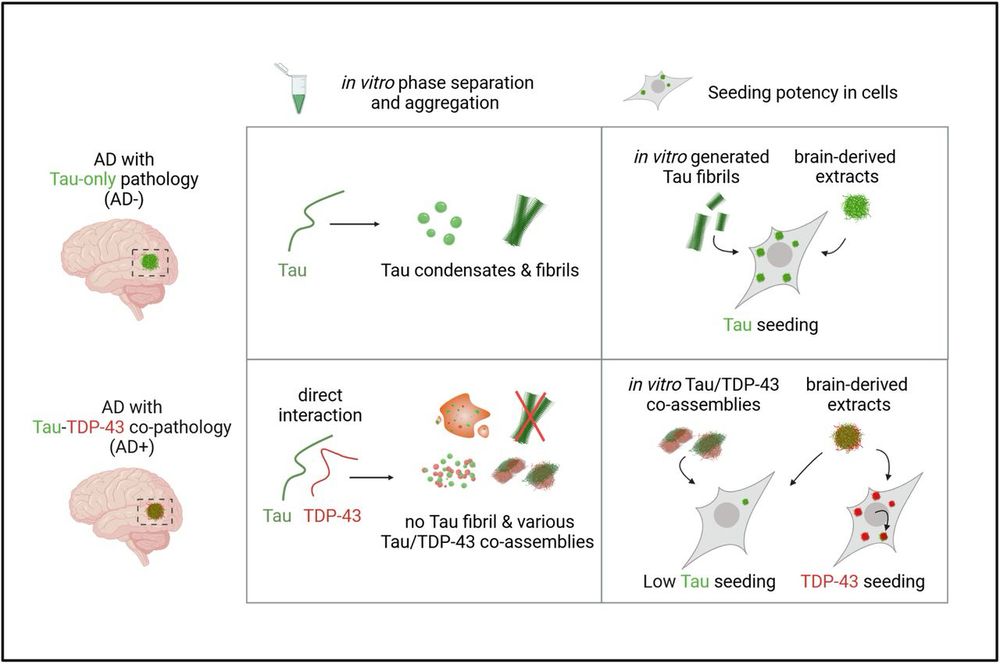
July 20, 2025 at 9:01 PM
Direct binding of TDP-43 and Tau drives their co-condensation, but suppresses Tau fibril formation and seeding www.biorxiv.org/content/10.1...
Chemically active wetting www.pnas.org/doi/abs/10.1...
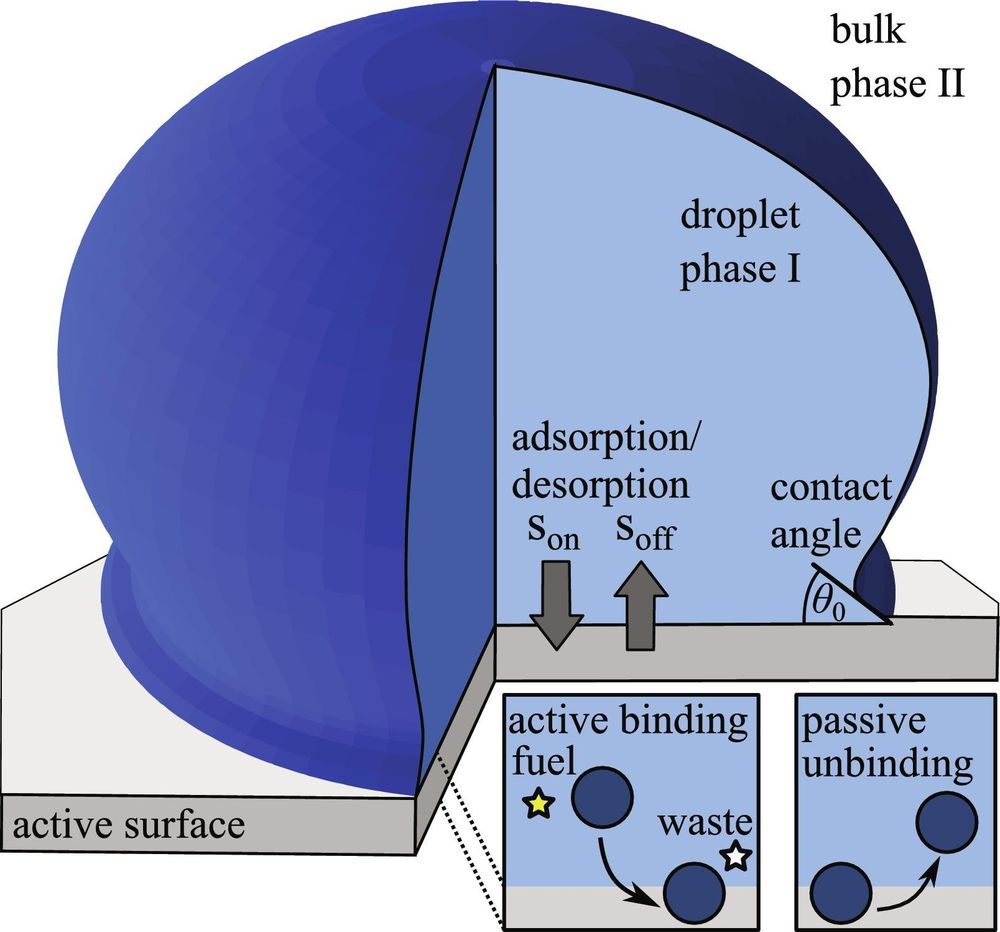
Chemically active wetting | PNAS
Wetting of liquid droplets on passive surfaces is ubiquitous in our daily lives, and
the governing physical laws are well understood. When surfaces...
www.pnas.org
July 7, 2025 at 10:39 PM
Chemically active wetting www.pnas.org/doi/abs/10.1...
Homotypic RNA clustering accompanies a liquid-to-solid transition inside the core of multi-component biomolecular condensates www.nature.com/articles/s41...
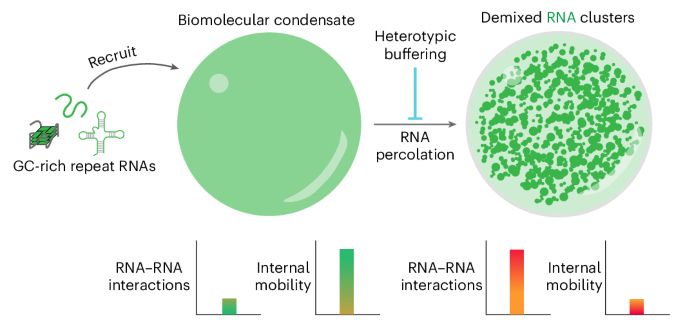
Homotypic RNA clustering accompanies a liquid-to-solid transition inside the core of multi-component biomolecular condensates - Nature Chemistry
Pathological aggregation of repeat-expanded RNA is implicated in neurodegeneration. Now results demonstrate that biomolecular condensates can promote irreversible clustering of GC-rich repeat RNAs fac...
www.nature.com
July 6, 2025 at 11:13 AM
Homotypic RNA clustering accompanies a liquid-to-solid transition inside the core of multi-component biomolecular condensates www.nature.com/articles/s41...
Global kinetic model of lipid-induced α-synuclein aggregation and its inhibition by small molecules
www.pnas.org/doi/10.1073/...
www.pnas.org/doi/10.1073/...
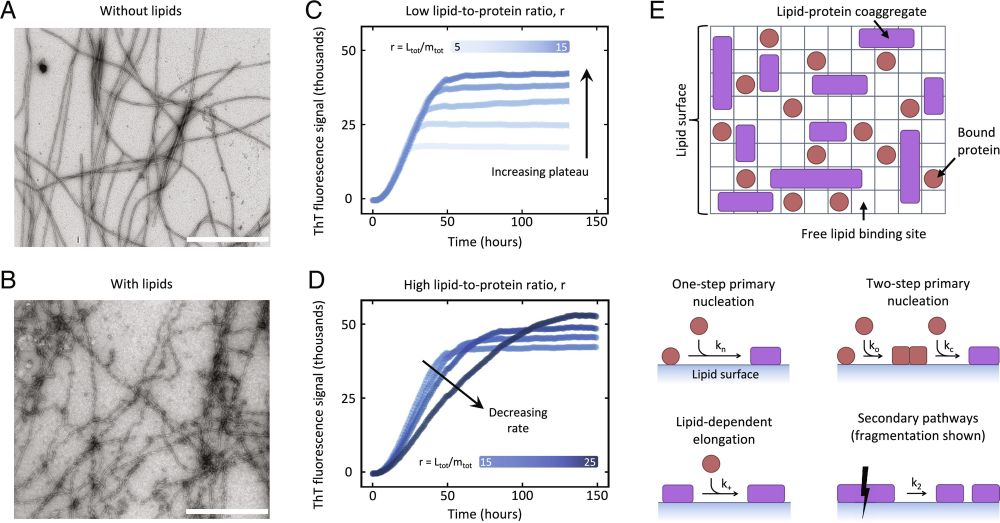
Global kinetic model of lipid-induced α-synuclein aggregation and its inhibition by small molecules | PNAS
The aggregation of α-synuclein into amyloid fibrils is a hallmark of Parkinson’s disease.
This process has been shown to directly involve interacti...
www.pnas.org
July 1, 2025 at 10:07 PM
Global kinetic model of lipid-induced α-synuclein aggregation and its inhibition by small molecules
www.pnas.org/doi/10.1073/...
www.pnas.org/doi/10.1073/...
Manipulation of coacervate droplets with an electric field doi.org/10.1073/pnas...
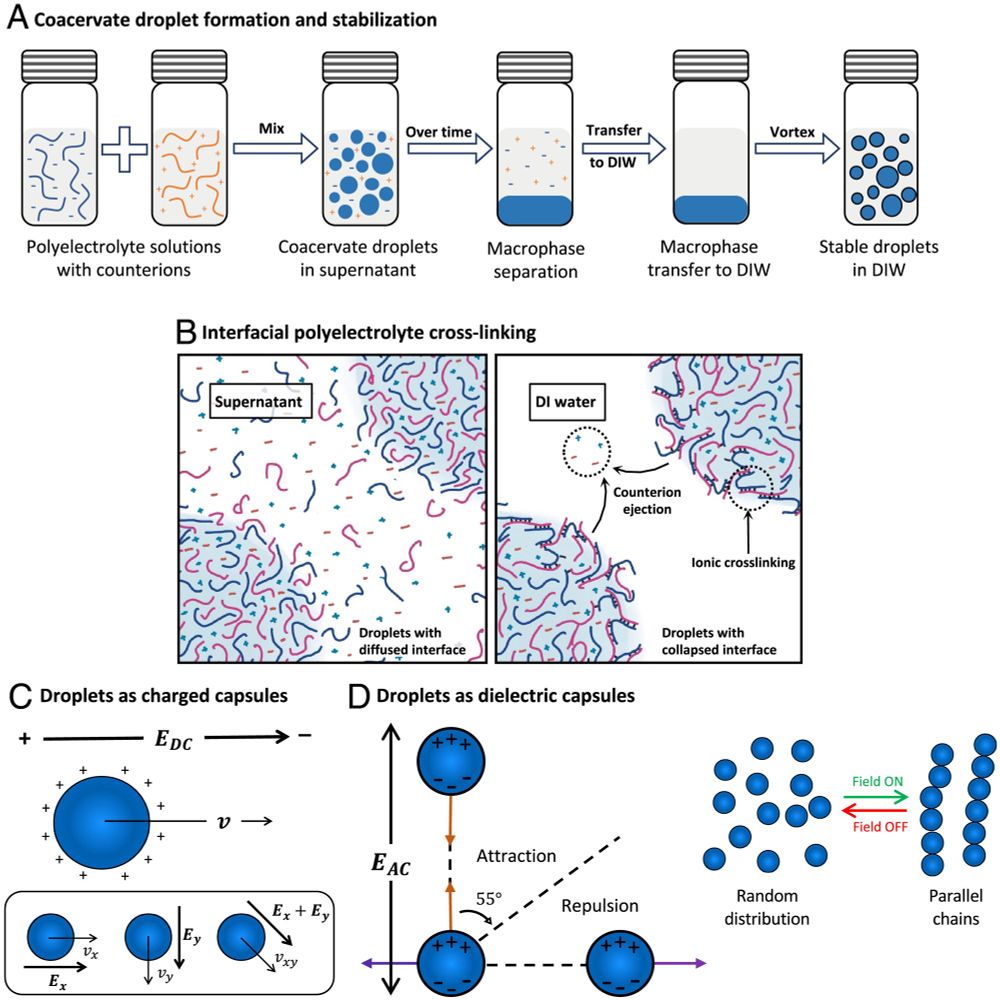
Manipulation of coacervate droplets with an electric field | PNAS
Many biopolymers are highly charged, and as in the case of many polymer mixtures,
they tend to phase separate as a natural consequence of chain con...
doi.org
June 7, 2025 at 4:10 PM
Manipulation of coacervate droplets with an electric field doi.org/10.1073/pnas...
Macrocyclic β-arch peptides that mimic the structure and function of disease-associated tau folds rdcu.be/enCNK
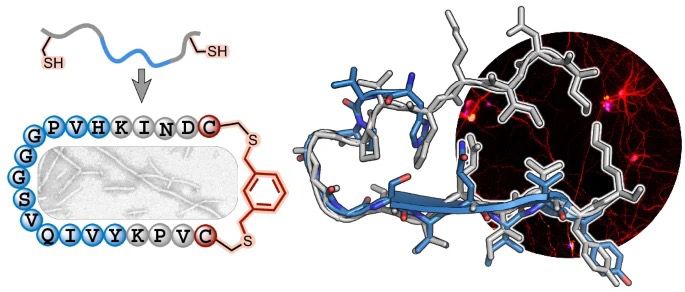
May 25, 2025 at 8:53 PM
Macrocyclic β-arch peptides that mimic the structure and function of disease-associated tau folds rdcu.be/enCNK
Small-molecule dissolution of stress granules by redox modulation benefits ALS models rdcu.be/emsBr
Small-molecule dissolution of stress granules by redox modulation benefits ALS models
Nature Chemical Biology - Uechi et al. found that a small-molecule lipoamide dissolves stress granules (SGs) by targeting SFPQ, a redox-sensitive disordered SG protein, alleviating pathological...
rdcu.be
May 17, 2025 at 1:23 PM
Small-molecule dissolution of stress granules by redox modulation benefits ALS models rdcu.be/emsBr
Reposted by Emanuele Lamberti
Spatiotemporal deciphering of dynamic the FUS interactome during liquid-liquid phase separation in living cells #NatCommun #MassSpec www.nature.com/articles/s41...
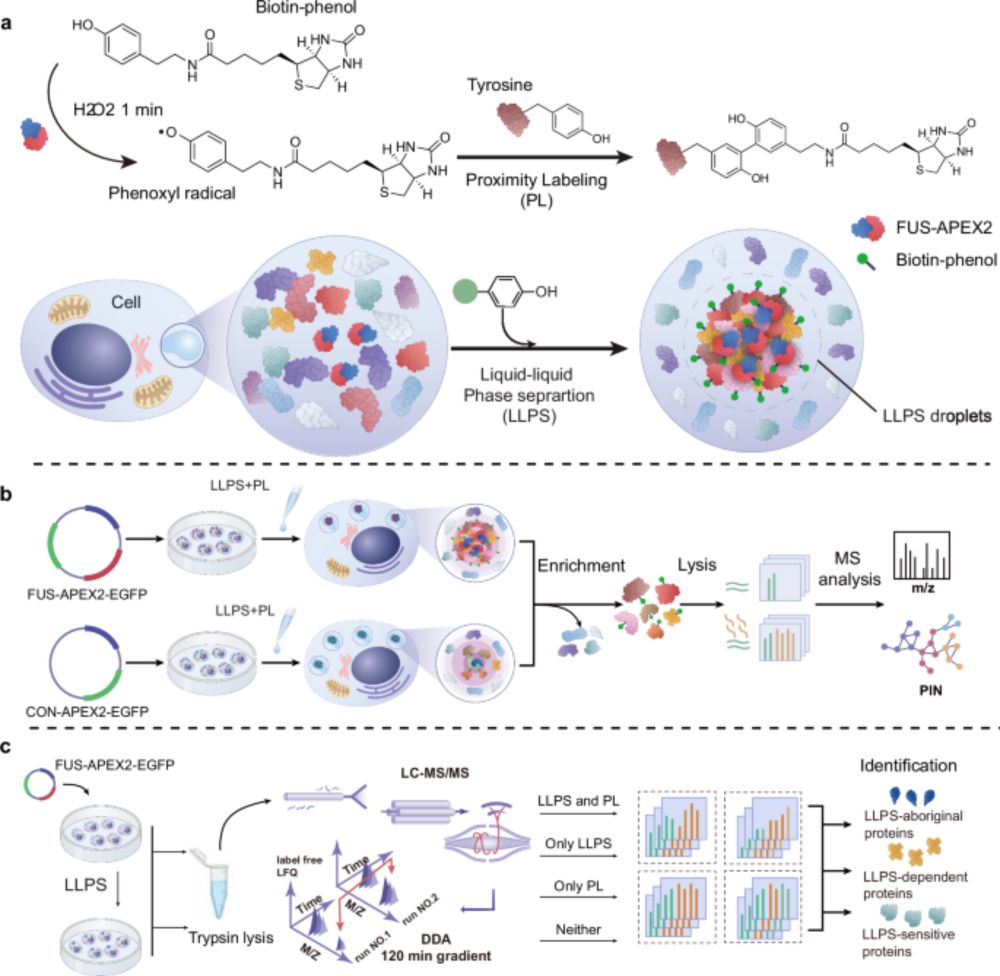
Spatiotemporal deciphering of dynamic the FUS interactome during liquid-liquid phase separation in living cells - Nature Communications
CLAPM uses proximity labeling mass spectrometry to monitor proteomes within phase-separated droplets. This approach identifies condensate-specific proteins to assess proteome dynamics in various cell ...
www.nature.com
May 10, 2025 at 6:27 PM
Spatiotemporal deciphering of dynamic the FUS interactome during liquid-liquid phase separation in living cells #NatCommun #MassSpec www.nature.com/articles/s41...
Reposted by Emanuele Lamberti
MOAG-4 promotes the aggregation of α-synuclein by competing with self-protective electrostatic interactions - Journal of Biological Chemistry www.jbc.org/article/S002...
MOAG-4 promotes the aggregation of α-synuclein by competing with self-protective electrostatic interactions
Aberrant protein aggregation underlies a variety of age-related neurodegenerative
disorders, including Alzheimer's and Parkinson's diseases. Little is known, however,
about the molecular mechanisms th...
www.jbc.org
January 26, 2025 at 11:07 PM
MOAG-4 promotes the aggregation of α-synuclein by competing with self-protective electrostatic interactions - Journal of Biological Chemistry www.jbc.org/article/S002...
Simple Model of the Effect of Solution Conditions on the Nucleation of Amyloid Fibrils | The Journal of Physical Chemistry B pubs.acs.org/doi/10.1021/...
Simple Model of the Effect of Solution Conditions on the Nucleation of Amyloid Fibrils
It is well known that peptide and protein fibrillation is strongly affected by the solution conditions, but a fundamental understanding of how amyloid fibril nucleation depends on solution pH, salt concentration, and solvent is absent. Here, we use expressions from Debye–Hückel theory to describe the interactions between charged amino acids in combination with our recently developed nonstandard nucleation theory to predict the concentration dependence of the fibril nucleation rate under different solvent conditions. The general rule that emerges from these considerations is that changes in solution pH, salt concentration, and solvent that increase the bonding energy between the fibril building blocks decrease the fibril solubility and promote fibril nucleation, in line with experimental observations. The simple analytical relations among the nucleation rate, fibril solubility, and binding energies provide a tool to controlling and understanding amyloid fibril formation by changing the solution conditions.
pubs.acs.org
January 19, 2025 at 3:04 PM
Simple Model of the Effect of Solution Conditions on the Nucleation of Amyloid Fibrils | The Journal of Physical Chemistry B pubs.acs.org/doi/10.1021/...
Interface of biomolecular condensates modulates redox reactions www.sciencedirect.com/science/arti...
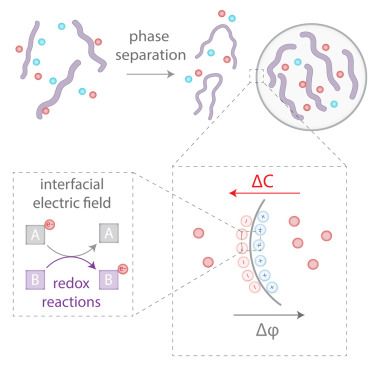
Interface of biomolecular condensates modulates redox reactions
Biomolecular condensates mediate diverse cellular processes. The density-transition process of condensate formation results in the selective partition…
www.sciencedirect.com
January 11, 2025 at 8:55 PM
Interface of biomolecular condensates modulates redox reactions www.sciencedirect.com/science/arti...




